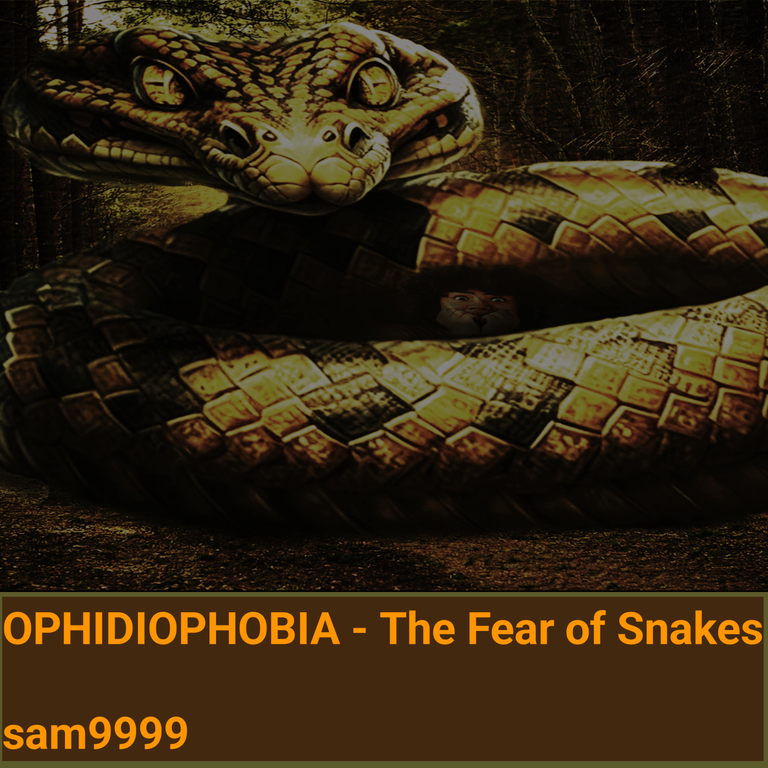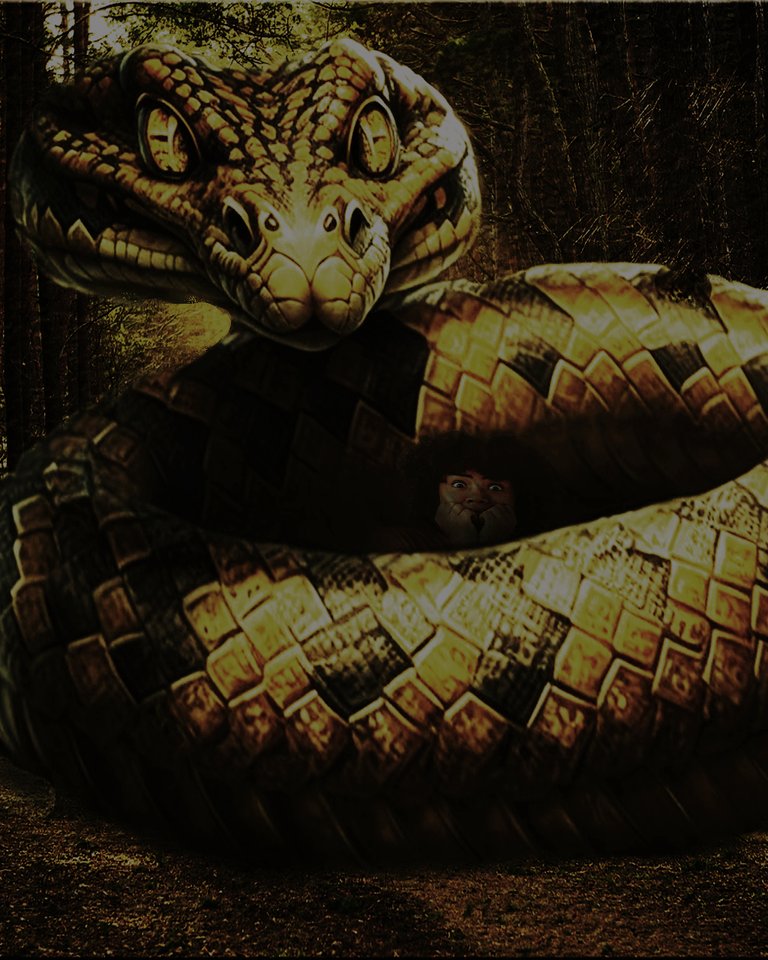Let's talk about something that sends shivers down many spines: snakes. Specifically, we’re diving into ophidophobia, the fear of snakes. If just reading the word "snake" makes you want to climb onto the nearest chair, table, or even tree, you’re not alone.
Now I want you to relax, sit back, and let's explore this slithery subject wihout losing our cool

My First Encounter with a Snake
Let me take you back to my childhood. Picture a sunny day , kids playing, birds singing, and me, blissfully (ignorance is bliss by the way) unaware, running through the grass. Suddenly, I froze. There it was a snake, right in front of me. It wasn’t a huge, monstrous snake, not even close ,but to my young eyes, it might as well have been a dragon. I screamed, did a high jump that would make an Olympic athlete proud, and sprinted back to my mom. That was the day I discovered my fear of snakes.
What Exactly is Ophidophobia?
Ophidophobia, pronounced “oh-fi-doe-foe-bee-uh,” is the intense fear of snakes. It’s one of the most common phobias, and it’s no joke – for those who have it, even seeing a picture of a snake can send their heart racing. This fear is right up there with the fear of heights, spiders, and public speaking (because who doesn’t love the idea of a room full of people judging you?). If seeing a snake on TV makes you cover your eyes, or the mere thought of encountering one on a hike gives you the heebie-jeebies, congratulations, you might have ophidophobia. Now this fear can range from mild discomfort to full-blown panic attacks.
But the question is, why are snakes so terrifying to some of us?
There are a few reasons why snakes give people the creeps:
Evolutionary Reasons:
Our ancestors had to be cautious of venomous snakes to survive. This fear might be hardwired into our brains, a survival instinct passed down through generations.
The Way They Move:
Snakes don’t have legs, yet they glide or maybe slide across the ground with eerie smoothness. It’s like watching a magic trick, but instead of clapping, you’re hiding under the nearest table. Snakes move in a way that’s, well, unnatural. Basically their movement can be unsettling because it’s so different from how most animals move. They are often quiet and stealthy and can sneak up on you, which is a bit rude if you ask me. Plus, they like hiding in unexpected places – under rocks, in tall grass, and sometimes even in your nightmares.
Pop Culture:
Movies, TV shows, and books(including the ones for our faith) often depict snakes as dangerous villains. From the terrifying basilisk in “Harry Potter” to the countless horror films, snakes rarely get a good rep.
Venomous Threat
Some snakes are venomous, which adds a layer of danger. While not all snakes are harmful to humans, some can be quite deadly, and our brains tend to remember that fact
So, how do you know if you have ophidophobia? Here are some telltale signs:
Rapid Heartbeat: Your heart feels like it’s trying to break a world record.
Sweating: Suddenly, it’s like you’re in a sauna.
Shaking: Your hands (or entire body) start to tremble.
Nausea: Your stomach decides to join the party.
Avoidance: You go out of your way to avoid places where snakes might be lurking – even the reptile house at the zoo is a no-go zone
How to Deal with Ophidophobia
To every problems there is a solution. Well except If the said solution hasn't been invented yet. Yeah, so if the thought of snakes makes you want to hide under your bed, there’s hope! Here are some tips to help manage the fear:
Education
Learn about snakes from reliable sources. Understanding that not all snakes are dangerous can help reduce fear. Knowledge is power, after all!
Exposure Therapy

Just like I decided to place a picture of a snake right here, you see gradual exposure to snakes, starting with pictures and moving up to videos, and then perhaps visiting a zoo, can help desensitize you to their presence. Just take it one step at a time – no need to rush.
Relaxation Techniques
Deep breathing, meditation, and other relaxation techniques can help calm your mind when you start feeling anxious about snakes.
Professional Help
If your fear is really interfering with your life, consider talking to a therapist. Cognitive-behavioral therapy (CBT) has been shown to be very effective for phobias.
Conclusion: Facing the Fear
Ophidophobia is a common and completely understandable fear. Snakes are mysterious creatures that trigger our primal instincts. But with a bit of knowledge, some gradual exposure, and maybe even a good laugh, it’s possible to manage and even overcome this fear.
Stay brave, stay curious, and remember: not all heroes wear capes. Some just face their fears, one snake at a time.
References
- https://my.clevelandclinic.org/health/diseases/22519-ophidiophobia-fear-of-snakes
- https://www.medicalnewstoday.com/articles/fear-of-snakes
- https://www.sciencedirect.com/topics/medicine-and-dentistry/ophidiophobia
- https://www.audiology.org/whos-afraid-of-snakes/
- https://www.smu.edu/news/archives/2012/thomas-headland-mother-nature-network-23mar2012
- https://www.oriannesociety.org/faces-of-the-forest/why-are-we-afraid-of-snakes-and-how-do-we-overcome-that-fear
Credit
- Thumbnail image designed in Photoshop and Pixellab
- Second image designed in photoshop


